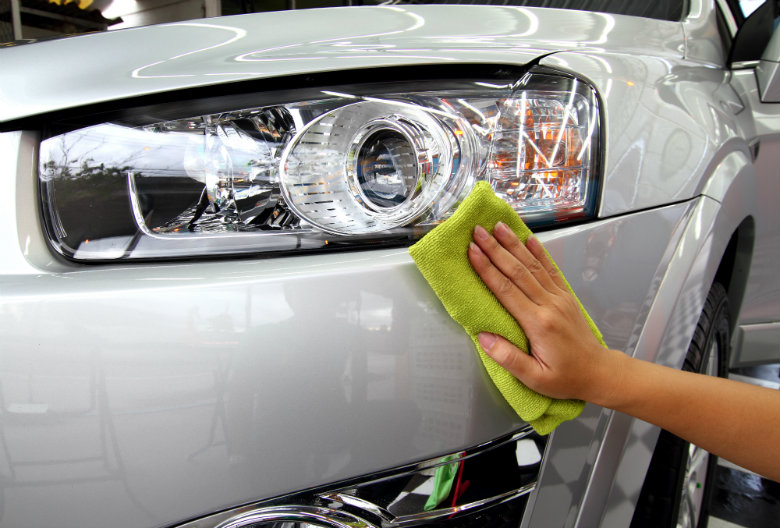Collision Types and Causes
One of the biggest contributing factors to collisions between cars and motorcycles is that many drivers are uninformed about the dangers both vehicles present to each other. The following are some of the most common causes of collisions.
Drunk Riding
According to the National Highway Traffic Safety Administration (NHTSA), 5,636 motorcycle riders died in accidents in 2021. Roughly 29% of those riders were alcohol-impaired during the accidents.
Those statistics skew even more if they are considered by time of day. Impaired motorcycle riders made up 42% of fatalities that occurred at night, compared to only 16% during the day.
Driving a motorcycle while drunk results in the same dangers that are present when driving a passenger vehicle while drunk. The rider has more difficulty reacting to danger and staying in their lane. Typically, they also have a decreased understanding of risk.
This is not to say that any motorcyclist who swerves in their lane is drunk. Due to a motorcycle’s more fragile frame, bikers often need to swerve to avoid road hazards like potholes. However, significant swerving on a relatively clear road may indicate drunk riding.
Failure to Maintain a Safe Distance
When a vehicle slows down, it is typically because the driver of that vehicle used their brakes to slow it. Car drivers are taught to keep safe driving distances and watch for brake lights on cars before them. However, it might be easy to misjudge this distance and drive too closely behind the vehicle in front of them.
Due to how close they’re following, the following driver has less time to react and may have to slam on their brakes when the vehicle in front of them slows down. It may result in an accident if they don’t slow down quickly enough.
Failing to maintain a safe distance is even more dangerous with motorcycles, though, because they have a means of slowing down that doesn’t involve using brakes. Motorcyclists can slow down by downshifting and may do this to save gas or have more control while slowing down.
Unfortunately, downshifting doesn’t turn on the brake lights. This means a motorcycle can significantly reduce its speed with minimal warning to a vehicle driving behind it.
The easiest way to avoid this type of accident is to give motorcycles even more distance than the driver would give a car at similar speeds. That way, if the motorcycle slows without brake lights, the driver behind the car will more easily notice the speed reduction and can take appropriate action in time.
Blind Spots
The average motorcycle is approximately seven to eight feet long, slightly less than three feet wide, and close to four feet tall. That means it has a slightly larger profile than the average bicycle. Comparatively, the average sedan is six feet wide, 15 feet long, and about a foot taller than most motorcycles. Therefore, it stands to reason that it’s much easier for a motorcycle to disappear into a blind spot due to its size.
The blind spot in every vehicle is different, depending on how the mirrors are adjusted. When mirrors are adjusted well, the rearview mirror covers a portion of the blind spots of the sideview mirrors and vice versa. However, even with the best coverage, every vehicle has at least a few blind spots.
Due to the inability to see hazards and other cars, these blind spots can result in accidents when drivers are switching lanes. Even signaling in advance doesn’t help if a motorcycle is already in the blind spot where the driver intends to move.
There are two things that most drivers can do to limit blind spot accidents with motorcycles. The first is to adjust the mirrors for maximum coverage. You can do this by first sitting behind the wheel and touching your head to the window. Then, you can adjust your mirror until you see the neighboring lane — with a small portion of the back of your car visible as a reference point. The passenger mirror can be adjusted by leaning to the right until your head is above the median of your car, then adjusting the mirror until you see part of your vehicle.
The other way to limit blind spot accidents is to be constantly aware of where the blind spots are and what vehicles have entered or left them. This requires diligent monitoring of mirrors while driving, including regularly turning the head and looking over the shoulder to see if anything entered any blind spots.
Speeding
Another factor that is common in motorcycle fatalities is speeding. Roughly one-third of all motorcycle fatalities occur when the rider is speeding. This number jumps to 49% of motorcycle fatalities when the rider is between 21 and 24 years old.
Speeding on a motorcycle is even more dangerous than speeding in a passenger vehicle. Motorcycles can lose traction quite easily if the road becomes slick or there is debris. And when a motorcycle loses traction, it is likely to fall over.
This means that motorcyclists who want to avoid accidents should avoid speeding. But what about car drivers?
As they would for other cars, wisdom dictates that the best thing car drivers can do when a motorcycle is speeding is to give the biker plenty of space. This allows drivers plenty of space and time if the rider needs to brake or swerve to avoid an obstacle suddenly.
Distracted Driving
Distracted driving is a danger that affects everyone on the road. According to Cambridge Mobile Telematics, 58% of trips drivers took in 2022 involved interaction with their phones. That is dangerous behavior for any driver.
While most smartphone interactions only take a few seconds, those few seconds can easily be enough to cause an accident. A car traveling at 60 miles per hour travels more than the length of a football field in four seconds. Since few drivers leave even half of that distance between their car and the vehicle in front of them, a few seconds of distraction can easily result in a car accident.
Someone not looking at the road is also likely to swerve out of their lane. The more time a driver is distracted, the further they are likely to swerve.
While these actions are equally dangerous to other cars as to motorcycles, accidents are more dangerous for motorcycles overall. Motorcycles account for only 3% of all vehicles on the road, but motorcycle accidents account for 14% of all fatalities. A distracted driver is much more dangerous to a motorcyclist than to the driver of another passenger vehicle.
Lane Splitting
This cause of motorcycle accidents is legally the fault of the motorcyclist in almost all states because lane splitting is only explicitly legal in California. Lane splitting occurs when a motorcycle rides along the lane divider of a multilane road or highway.
In California, lane splitting is only legal when traveling between two lanes that are moving in the same direction. Motorcycle riders and other vehicles are both required to respect each other’s right-of-way.
Lane filtering is also legal in Utah. It is similar to lane splitting, except it only applies when traffic is stopped or traveling at a speed no faster than 15 mph.
Unfortunately, while lane splitting has been legal in California since 2016 and lane filtering has been legal in Utah since 2019, many drivers are still unaware it is legal. A survey of California drivers found that only 61% knew the activity was legal in the state.
Because drivers and bikers alike are expected to follow road safety regulations, drivers shouldn’t have to watch out for a motorcycle traveling at potentially high speeds along the dividing line. As such, it’s reasonable to think that many drivers won’t be on the lookout for such behavior.
Both motorcyclists and car drivers can take steps to avoid collisions that might arise due to lane splitting. Motorcyclists should avoid lane splitting when traffic is moving swiftly and try to stick to splitting along the line just right of the far left lane. Car drivers should educate themselves on the practice and not swerve or jerk when being passed.
Nighttime Driving
Almost 40% of all motorcycle fatalities occur at night. There are several reasons for this, some of which have already been listed. Motorcyclists are more likely to be alcohol-impaired at night, and dangerous road conditions are harder to see at night. Furthermore, motorcycles become even more difficult for other drivers to see during the night, especially if the rider is wearing dark clothing.
Motorcyclists can take one easy precaution to avoid nighttime accidents. They should wear light-colored clothing with reflectors. This highly increases the visibility of the bike and rider, decreasing the likelihood that an inattentive driver won’t notice their vehicle.
Car drivers should take the usual precautions for nighttime driving, such as:
- Never drive while tired.
- Always use lights, even at dusk when there is still some light.
- Drive more slowly to make up for the lack of visibility.
- Avoid distractions like eating while driving.
If a car driver is paying attention, motorcycles will be apparent because they only have one headlight that is usually located near the center of the lane. This warns the driver that they should take extra care.

What to Do if You Are Involved in a Car and Motorcycle Accident
When a car and motorcycle collide, the usual rules of accidents apply. You must pull over to the side of the road (if you can do so safely), share contact and insurance information, and contact the police if anyone is injured. Never leave the scene until the police have told you that you can.
Since injuries are extremely likely in a motorcycle accident, you should call 911 immediately. The motorcyclist’s life may depend on the speed at which emergency medical personnel arrive at the scene of the accident.
As with most accidents, once you have taken actions to protect the health of all parties, it is wise to document the accident scene and contact a personal injury lawyer. This way, you can protect your rights and pursue compensation if someone else’s negligence results in your injury.
Read More Here




